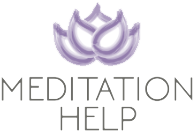
Start meditating with three easy steps.
- Pick a meditation style. The type of meditation you choose should be based on what you want to achieve. Here are seven common types of meditation and their potential benefits:
- Transcendental Meditation (TM) helps you find your inner calm and achieve a state of enlightenment.
- Heart Rhythm Meditation (HRM) provides physical, mental, and emotional benefits by developing your consciousness.
- Kundalini focuses your energy to achieve healing.
- Guided Visualization uses Buddhist principles to achieve specific goals related to personal development, spiritual healing, and stress relief.
- Qi Gong uses breath to improve posture, respiration, and relaxation.
- Zazen, a self-guided practice, aims to help you forget all judgmental thoughts and feelings.
- Mindfulness focuses on overcoming suffering caused by anxiety by letting the mind wander and accepting all thoughts and feelings.
- Pick a time. For many of us, it can be difficult to find even a few minutes of quiet and calm in our busy lives. According to the experts, some times of day are better for meditation than others. No matter which time you choose, the key is to commit and be consistent.
- Morning – Meditation first thing in the morning sets the tone for your day.
- Noon – Taking a break in the middle of the day can help reset your stress levels and increase productivity.
- After Work – Meditating at the end of the workday can ease the transition from professional to personal life.
- When Stressed – During stressful moments and situations throughout your day, a few minutes of meditation can bring you back to center.
- Just begin. Like anything meaningful in life, developing a meditation practice that works for you takes time and practice. You can make changes to your practice as you figure out what works well… and what doesn’t.
